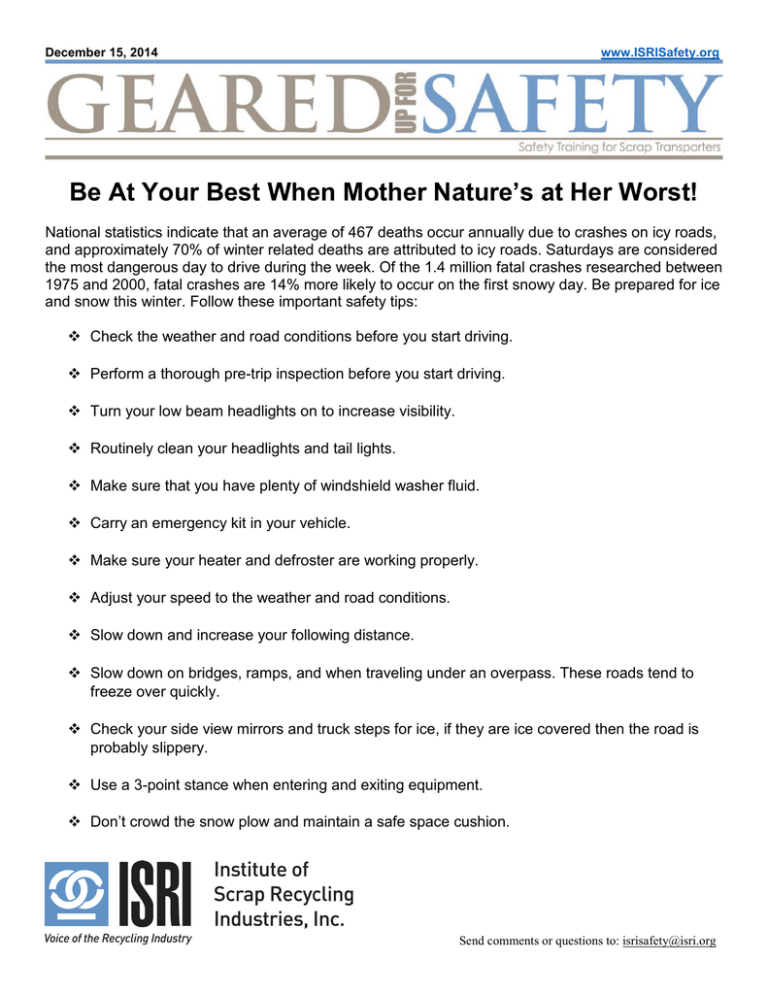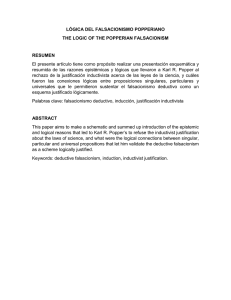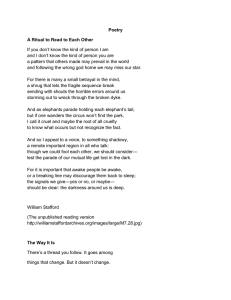Be At Your Best When Mother Nature`s at Her Worst!
Anuncio

December 15, 2014 www.ISRISafety.org Be At Your Best When Mother Nature’s at Her Worst! National statistics indicate that an average of 467 deaths occur annually due to crashes on icy roads, and approximately 70% of winter related deaths are attributed to icy roads. Saturdays are considered the most dangerous day to drive during the week. Of the 1.4 million fatal crashes researched between 1975 and 2000, fatal crashes are 14% more likely to occur on the first snowy day. Be prepared for ice and snow this winter. Follow these important safety tips: Check the weather and road conditions before you start driving. Perform a thorough pre-trip inspection before you start driving. Turn your low beam headlights on to increase visibility. Routinely clean your headlights and tail lights. Make sure that you have plenty of windshield washer fluid. Carry an emergency kit in your vehicle. Make sure your heater and defroster are working properly. Adjust your speed to the weather and road conditions. Slow down and increase your following distance. Slow down on bridges, ramps, and when traveling under an overpass. These roads tend to freeze over quickly. Check your side view mirrors and truck steps for ice, if they are ice covered then the road is probably slippery. Use a 3-point stance when entering and exiting equipment. Don’t crowd the snow plow and maintain a safe space cushion. Send comments or questions to: isrisafety@isri.org www.ISRISafety.org 15 de diciembre de 2014 ¡Esté preparado ante las inclemencias de la naturaleza! Las estadísticas nacionales indican que un promedio de 467 muertes ocurren cada año debido a accidentes en carreteras heladas, y aproximadamente el 70 % de las muertes relacionadas con el invierno se atribuyen a carreteras heladas. Se considera que los sábados es el día más peligroso para conducir durante la semana. De los 1,4 millones de accidentes fatales investigados entre 1975 y 2000, los accidentes fatales tienen una probabilidad del 14 % de que ocurran en el primer día de nieve. Esté preparado para el hielo y la nieve este invierno. Siga estas recomendaciones importantes de seguridad: Compruebe las condiciones meteorológicas y de la carretera antes de empezar a conducir. Realice una inspección minuciosa previa al viaje antes de empezar a conducir. Encienda las luces bajas para aumentar la visibilidad. Limpie con frecuencia los faros delanteros y las luces traseras. Asegúrese de que tiene suficiente líquido limpiaparabrisas. Lleve un equipo de emergencia en su vehículo. Asegúrese de que su calentador y descongelador están funcionando correctamente. Adapte su velocidad a las condiciones climáticas, del tránsito y de las carreteras. Reduzca la velocidad y aumente la distancia entre usted y el vehículo que va delante suyo. Reduzca la velocidad en puentes, rampas, y cuando viaja debajo de un paso a desnivel. Estos caminos tienden a congelarse rápidamente. Revise que sus espejos laterales y peldaños de los camiones no tengan hielo, si están cubiertos de hielo, es probable que la carretera esté resbaladiza. Utilice una postura de 3 puntos al ingresar y retirar equipos. No llene la máquina quitanieves y mantenga un espacio de seguridad. Envíe sus comentarios o preguntas a: isrisafety@isri.org Training Session Sign-In Sheet Topic Instructor Location Date





